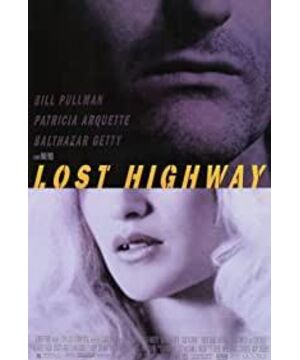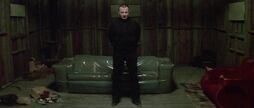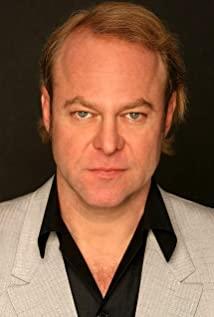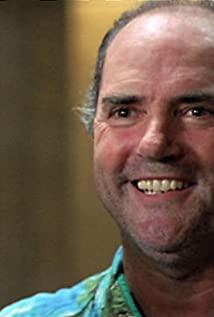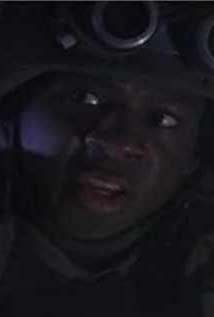Lost Highway movie plot
2021-11-15 08:01
Version one
Patricia Arquette kept receiving inexplicable packages, which were video tapes. He (Bill Puman) watched them with her. The screen was actually their daily lives. Who secretly photographed them? The result of the alarm is helpless. The last time he received the package, he killed her on the screen. He rushed into the room in a panic. She was already dead on the bed, hopelessly, the police appeared at the door.
Version two
A jazz musician received a video tape delivered anonymously, which recorded the life of his secret wife, so he called the police, and the investigation was found to no avail. One day the husband received another plate. The scene was of him hacking and killing his wife in the bedroom. It was extremely bloody. Then he ran back to the bedroom to call his wife, and the wife fell in a pool of blood. Needless to say, the police detained the husband naturally, but the next day in the cell where the husband was imprisoned was another strange man.
Version three
This is the weirdest and unclear film in David Lynch's film. The superficial plot is that the home of a jazz musician and his wife keeps receiving video tapes, recording the most secret place in their home. One morning, the video tape recorded a musician killing his wife and he was imprisoned.
A few days later, he turned into another person overnight, and the police had to release him somehow. He returned to work in the auto repair shop. He was loved by the gang boss because he repaired a good car, and he hooked up the boss’s mistress, a woman who looks the same as the musician’s wife, and under her inducement, he killed people and robbed money. Escape to the desert highway. After the two had sex, he became a musician again, and went to the hotel named "Lost Expressway" to catch his wife and the gang boss, so he killed the boss, the police also found him, so he fled again on the desert road. The musician once said that the way he recalled things was to modify them. Perhaps there is no story in the film, but the crazy and divorced thoughts of a man who killed his wife because of his wife's affair, which existed because of his desire.
Psychoanalysis report of "Monster Night Panic"
Perhaps in the psychology classes of all universities across the country, teachers will quote movies to invigorate the classroom atmosphere. At this time you will find that this quoted movie must be Hitchcock's "Doctor Edward". Without exception. I really want to tell the teachers that in addition to "Doctor Edward", there are hundreds of psychology films in the world; there are also some Niu X directors who can make Hitchcock stand aside. Talking about "Doctor Edward" all day makes people think that only Hitchcock is the only director in the world who understands psychology. In fact, what Hitchcock is good at is just the most straightforward reference to Freud's psychoanalysis. But there is a director who uses the principles of psychoanalysis to complete his work without a knife. His works make the audience feel that there is a coincidence with psychoanalysis everywhere, but it is difficult to grasp where the coincidence lies. This guy's name is David Lynch. (Crazy Diamond @mtime original)
"Monster Night Panic" is by far the most interesting work by David Lynch.
If "Monster Night Panic" is a mental patient, then I will pretend to be a psychologist once to see what kind of inner world is hidden under this fragmented appearance. The following is a psychological analysis report of "Monster Night Panic".
Plot analysis report
I insist that no matter from which angle you are playing "Monster Night Panic", you have to start with the plot. Only when the plot of the film emerges, can you truly understand the intention of every detail arranged by the director, and understand the perspectives of the actors. Looks like an inexplicable expression.
If you want to understand without much effort what is going on in this seemingly chaotic movie, I suggest you divide the movie into three sections:
The first segment starts from the beginning of the film until the actor Fred is sentenced to death for murdering his wife and imprisoning-this is the reality and the ending of the story;
In the second paragraph, the actor Fred turned his head deformed in prison to Peter the car repair boy, until Peter became Fred again in the desert-this paragraph is actually a dream of the actor Fred in prison;
The third paragraph changes from Peter back to Fred until the end of the film-this paragraph is still Fred’s dream, but half-truth, most of the details have happened in reality and happened before the first paragraph, which actually confesses the story The cause.
So the story of "Monster Night Panic" is actually this:
The protagonist Fred discovered that his wife Renee often went to a motel on the "Lost Highway" in the desert to meet with a man named Dick Laurent, and discovered that she might have been a porn star who had an affair with Dick Laurent. Fred killed Dick Laurent after his wife had a date with Dick Laurent. (This is explained in the third paragraph)
Fred became extremely anxious because of the fear of killing, and began to hallucinate. He also developed another personality-a terrible and mysterious old man , and he even sneaked into his own home under this personality to make secret videos. What made Fred even more intolerable was that after he killed Dick Laurent, Renee seemed to have an affair with a man named Andy. Fred learned that Andy also knew Dick Laurent, which increased his anxiety and distrust of his wife. So he finally dismembered his wife in a mental breakdown. He was later sentenced to death. Insomnia in prison, the doctor had a strange dream after giving him medicine. (This is the first paragraph)
At the beginning of the dream, Fred replaced himself with peter, a car repair boy, and fell in love with Alice, who was exactly like his wife Renee. But the dream became more and more real, and another mysterious old man who was awake also began to dream, and even Peter became a real Fred again, and the dream turned into a nightmare. In the end, the police chased him on the highway, with nowhere to escape, his face began to deform again, representing the waking up from a nightmare. What is waiting for him is the reality that has been unavoidable. (This is the second and third paragraph) (Crazy Diamond @mtime Original)
Director Analysis Report
If you agree with my analysis of the plot, then what the director wants to express is actually very simple-nothing more than "thinking by day, dreaming by night". To be more precise, it is "careful day and dream night". Those negative emotional experiences (fear, etc.) that cause anxiety during the day are most likely to be brought into dreams. Even from the perspective of modern psychology, this saying is still the most basic principle for explaining dreams. I think David Lynch is guided by this kind of thinking, using "Monster Night Panic" to show us a dream, and lead us and the dreamer to experience the anxiety in reality before the dream.
However, David Lynch was only responsible for presenting us a fragmented dream and reality, without directly commenting on it. So whether it is the recurring mirrors in the film, the wooden house restored from the fire, or the mysterious video tape, David Lynch leaves all these weird and obscure details to the audience to play with.
So I think if you look at it by the same standard, David Lynch is much better than Hitchcock in expressing psychological suspense. Hitchcock undoubtedly liked Freud's theory very much, so in "Doctor Edward" he created a dream based on Freud's theory of unconsciousness, and even analyzed it in a pretentious manner; Hitchcock even often used his Freud’s views are quoted directly from the characters in the film. But this seems too deliberate and straightforward. At least I don’t think that the weird dream in "Doctor Edward" is so contagious. On the contrary, the anxiety and fear brought to the audience by "Demon Night Panic" is so real that it makes people think it is really David Lin. A nightmare that Qi once experienced.
Actor Analysis Report
Among all the actors in this film, the movie star Bill Pullman, who plays the lead actor, Fred, performed quite well. If you agree with my analysis of the plot, then you will also find that in the first paragraph of the film, Pullman has shown the extreme anxiety after the attack and the ensuing mental weakness and resentment of his wife's infidelity quite well. For example, the first official shot of the film is Fred with heavy thoughts and smokes very disturbed. The plot at this time was actually that Fred had just killed Dick Laurent, and Fred was shrouded in extreme anxiety after the attack. It can be said that from the first official shot of the film, Pullman is fully integrated into the role of Fred, and the plot of the first paragraph of the film is almost entirely driven by Pullman's performance.
From this point of view, the most similar performance is Tony Leung in "In the Mood for Love". The plot of "Flowers" is almost driven by Tony Leung's eyes. (Crazy Diamond@mtime原) Although almost no one in China saw the coldness and regret of revenge in Tony Leung’s eyes, and almost no one really understood the plot of "Flower", but I think the judges of Bing Na understood it. , Otherwise they will not award the award to Tony Leung. Pullman is not so lucky. Due to the extremely obscure "Demon" itself, neither professional film critics nor ordinary audiences seem to know what he is acting.
In addition to Pullman, Robert Blake, who plays the mysterious old man, is the biggest highlight in the film. The "stunning" appearance of this old man who was chilled to watch at the party has become an iconic scene in David Lynch's movie. The reason why this role left such a deep impression is that, in addition to the successful styling, Blake's outstanding performance is indispensable.
The key symptom analysis
①Who actually said "Dick Laurent is dead"
This is the plot that collapsed the logic of most viewers. At the beginning of the film, Fred heard the doorbell ring, someone said to him "Dick Laurent is dead", and then heard the sirens, but looking out of the window, there was nothing; but at the end of the film, Fred rang the doorbell himself and said "Dick Laurent is dead". So the film enters an endless loop that is logically inconsistent.
However, this strange detail is actually far less complicated. At the beginning of the film, Fred heard that "Dick Laurent is dead" is not real, but his own illusion! At that time, Fred had just begun to have hallucinations. The more he feared that he would be discovered about his murder, the more he jumped out and said to himself, "You killed someone, don't think others don't know". Hearing the siren was also because Fred was afraid of revealing his murder. Therefore, this plot is the same as talking to a mysterious old man at a party. It is Fred's own fantasy, and the second appearance of this plot is actually Fred's dream. At this time, he had realized that he had nowhere to go, so he told himself in reality in his dream that Dick Laurent was dead and reality was irretrievable.
So the first time is an illusion in reality, which represents anxiety and fear; the second time, it is a dream, which represents despair. They do not happen at the same time.
②Mysterious old man
That mysterious old man, whether in dream or in reality, is actually another personality of Fred. This personality is the embodiment of the fear and anxiety in his own heart. Whether in dreams or in reality, he always reminds him that reality cannot escape. The more anxious, the more this personality appears. At the same time, he is also the violent side of Fred's character. When Fred starts to kill, the mysterious old man will also appear, such as when killing Dick Laurent and seeing his wife and Andy ambiguous at parties. At the end of the film, when Fred and the mysterious old man once again killed Dick Laurent in a dream, Fred's desire to escape reality was replaced by complete despair, so the mysterious old man disappeared and became one with himself.
③Video tape
The first two mystery tapes were taken by Fred's other personality-the mysterious old man, who was actually Fred himself. This personality warned Fred through the video tape, "Someone is watching you, and someone knows what you are doing." This is what Fred fears most. If you look at the second video tape carefully, you will find that Fred and his wife in the bedroom are not like real people at all. "Fred" in the videotape is not only stiff, but also has no head! Obviously a model. (Crazy Diamond @mtime original)
So how do you explain the third videotape? How can a man use a sports lens to photograph himself dismembering his wife? ——Actually, there is no third videotape at all! Only Fred himself saw the third videotape. Watching this videotape was actually just Fred's hallucination, or the emergence of another personality. In this way, he remembered the fact of killing his wife. In prison, when the video of this videotape flashed in Fred's mind, the picture turned to color, showing that this was just an illusion of his own.
④Wooden house
In "The Demon", the wooden house restored from the fire is always a turning point between dream and reality. The first time the wooden house appears is before Fred enters the dream in prison, and the second time is before Peter changes back to Fred in the dream. It is inferred from this that Fred burned Dick Laurent's body in the wooden house, and the location of the attack became a substitute for the fact of the attack, appearing in hallucinations and dreams, telling himself that reality cannot be escaped. "Recovering from the fire" represents Fred's wish that the facts can be restored.
⑤Mirror
There are two episodes of looking in the mirror in the film. One was that Fred walked into the dark corridor of the house, looked in the mirror and walked out gloomily. The next day he found that he had dismembered his wife. Both the promenade and the mirror are quite symbolic. Walking into the dark promenade symbolizes walking into the dark side of one's personality, and then as if seeing another self in the mirror. When he came back from the promenade, he might as well say that he was the other himself in the mirror—a Fred who resented his wife and lost his mind. The second episode of looking in the mirror is Peter looking in the mirror in his dream. This is a turning point in the dream. Before that, Peter can say that the spring breeze is proud, relaxed, and completely a sweet dream, which is the embodiment of Fred's desire to escape reality. Maybe Fred also realizes that this is too far from reality. "Is this really me?" So he saw himself in the mirror. Sure enough, it was not Fred in reality, but Peter in dreams. From here, fear continued to invade this dream, pulling it back to the abyss of reality step by step. (Crazy Diamond @mtime original)
The level is limited, the analysis ends here. In fact, this is only a very incomplete analysis report. There are actually too many secrets hidden in the heart of this patient waiting to be discovered.
Perhaps one day, David Lynch will eventually become Cao Xueqin in the film industry, and there will be many "Lin" scholars in the world. I don’t know if there is still so much fun after playing "Monster Night Panic" at that time?
Extended Reading
-
Lou: What a fucking job.
Hank: His or ours, Lou?
Lou: Ours, Hank.
-
Fred Madison: Who the hell owns that dog?


